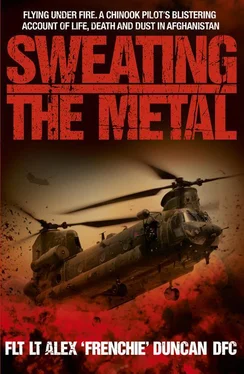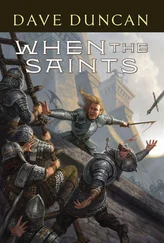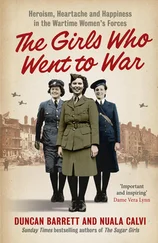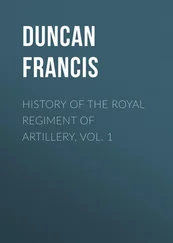‘That’s exactly it,’ I say. ‘It resonates more because there’s an instant affinity based on shared experience and culture. It doesn’t matter how I try and rationalise it and if I’m honest, I feel a bit strange that I feel like that, but it’s not something you have any control over, is it? It’s just the way it is.’
‘You know how we pick up so many children?’ asks Morris. ‘What amazes me is how they always tend to arrive with a relative – usually a father or grandfather – and if it’s a girl we’re picking up, they’re always more concerned about her status and her religion than they are with letting the doctors deal with her injuries. The medics are trying to lift her dress up to treat severe leg injuries or traumatic amputations and she’s trying to cover herself up because her father’s stood there. That always strikes me as a terrible shame; one of the cultural differences that we don’t seem to be able to bridge.’
Just then the phone goes: two long rings. The guys have got another shout.
German and I make our excuses and head back to our tent. One more day down; another day closer to home.
We finished the month providing IRT support to Operation Chakush, a British-led NATO operation which had started about a week earlier in the area between Heyderabad and Mirmandab, just north-east of Gereshk. Chakush, the Pashto word for ‘hammer’, was designed to kick the Taliban out of the area and keep them out, and it involved around 1,500 mostly British Forces drawn from the Light Dragoons and 1st BN Grenadier Guards together with some 500 ANA.
We were seeing a lot more ANA-led ops against the Taliban on this Det, assisted of course by UK troops from the Operational Mentor and Liaison Team, or ‘OMLT’. Nevertheless, it showed that the Afghans were taking a hand in dealing with problems themselves, which in itself was a remarkable improvement on how things had been previously. Even this early on in our tour, I’d already noticed quite a difference compared to my deployment in the summer of 2006. We weren’t necessarily coming under fire more frequently, but we were flying a greater number of IRT missions. What it illustrated was that the Taliban were evolving and had started to adapt their tactics – there was a massive spike in their employment of IEDs.
The Afghan National Army had been leading an operation attacking two compounds near Sangin with a trench system between them, and one of the ANA soldiers had taken a round. It was late at night when we got the call to scramble; he was categorised T1.
As per usual, we were up and away in no time. As captain, I went to the JOC to get the details while Rich, Jim and Bob went straight to the cab to get her up and running. Rich was the handling pilot, while I was doing nav.
We were flying on NVGs, which always makes for an interesting experience. The technology behind this vital bit of kit is something of a paradox, as it’s both amazingly simple in concept, yet complex in application. At its most basic level, the goggles work by converting whatever light there is into electricity, boosting that electricity, and then turning it back into light. It’s easy to take a small electric current at one end and produce a bigger flow at the other – it’s what amplifiers do, although you probably most commonly associate them with electric guitars or sound systems.
In practice, NVGs gather all available ambient light – cultural, moonlight, starlight and infrared – through a lens on an image intensifier tube (IIT). Light is made of photons (particles of light) which the IIT converts into electrons (subatomic particles carrying a negative electric charge). Those electrons hit a very thin charged disc called a photocathode, which amplifies them, releasing millions more electrons, and they then hit a phosphor screen, which converts them back into photons. As there are now millions more photons than originally entered the lens, what you see is a much brighter monochromatic green two-dimensional version of the original scene.
Although the photons that hit the IIT are carrying light of all colours, these colours are lost when the photons are converted to electrons. The phosphors on the screen are deliberately chosen to make a green image, because the human eye can decipher more different shades of green than any other colour. As NVGs display a two-dimensional image, there’s no perception of depth, which can make flying quite a challenge since distance and closing speeds are very difficult to assess. It’s something you get used to though.
Initially, we were held off by the Apache escorting us as there was a firefight going on, but we got clearance within about ten minutes so we started our approach to the HLS.
Rich flew a tactical descent to scrub off speed and line us up with the target that we’d identified, and suddenly it all kicked off. The ANA heard us coming in so they laid down a weight of fire to suppress the Taliban who were intent on shooting us down. That prompted the OMLT in their Warrior Fighting Vehicles to join in, so they opened up on the compound with their 30mm cannons. That was great in one sense, but it was fucking scary at first: all we could see were loads of lines of red and green tracer being directed against these two compounds.
Through the NVGs, everything has an ethereal, slightly unreal quality and in some respects you feel quite detached, but it’s still bizarre seeing all this ordnance being fired, knowing that, although it looks quite pretty, it would ruin your day if it were to hit you. AK-47s and RPGs are the weapons of choice for both the ANA and the Taliban, so it seemed like thousands of 7.62mm rounds were flying back and forth, with RPG rounds being traded in both directions and a sizeable amount of 30mm to boot. The image through our NVGs was almost painfully bright and it seemed like the sky was alive with rounds. The air was thick with lead.
The HLS was really dusty, even by Afghan standards, and I remember thinking, ‘I’m glad I’m not flying this!’ Rich did a beautiful landing and he put us down in the exact spot we needed to be in. We were just behind the line of friendly forces so we were pretty well protected. The ramp went down and the QRF guys fanned out in a protective cordon while the MERT ran off to find the casualty; Rich and I just sat there with the rotors turning watching the fireworks.
I guess it was still pretty risky – we were within range of fire from the Taliban, but the ANA were so effective at suppressing them that we never really felt under threat. It’s funny how your perception changes and, with it, your attitude to risk. I guess it’s all relative, but even when you’re taking fire, it’s a matter of degrees. It’s one thing being stood at close quarters having someone trading fire with you, but when there’s distance involved and difficult angles it’s another story altogether.
I don’t recall feeling scared once we were on the ground, and that made me think again of how much easier life is for those of us in theatre than it is for our loved ones back home. To them, you’re going to Afghanistan so they’re worried sick. They don’t know the parochial aspects of life out here – most of what people at home know is gleaned from the media.
Sex sells, which is this case translates as bullets, bombs and guns. So the TV news, magazines and newspapers rarely show the casual side of life in theatre because it’s dull – the public are fed a steady diet of high-octane ops, with reporters being filmed looking like Rambo in chinos, minus the weaponry, diving for cover as the bullets fly. Ross Kemp speaks breathlessly of the dangers, taking cover in a ditch somewhere in Helmand as the section he’s embedded with tries to fight its way to safety. In short, those at home know that when you go to Afghanistan it’s more than likely going to be bloody dangerous.
Читать дальше













